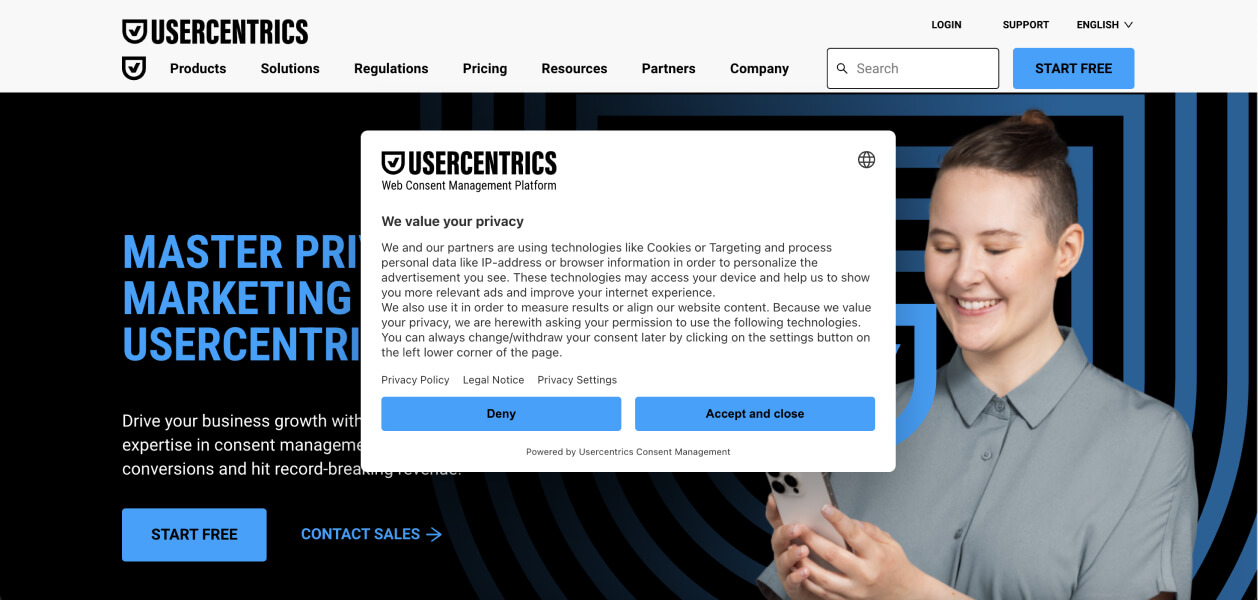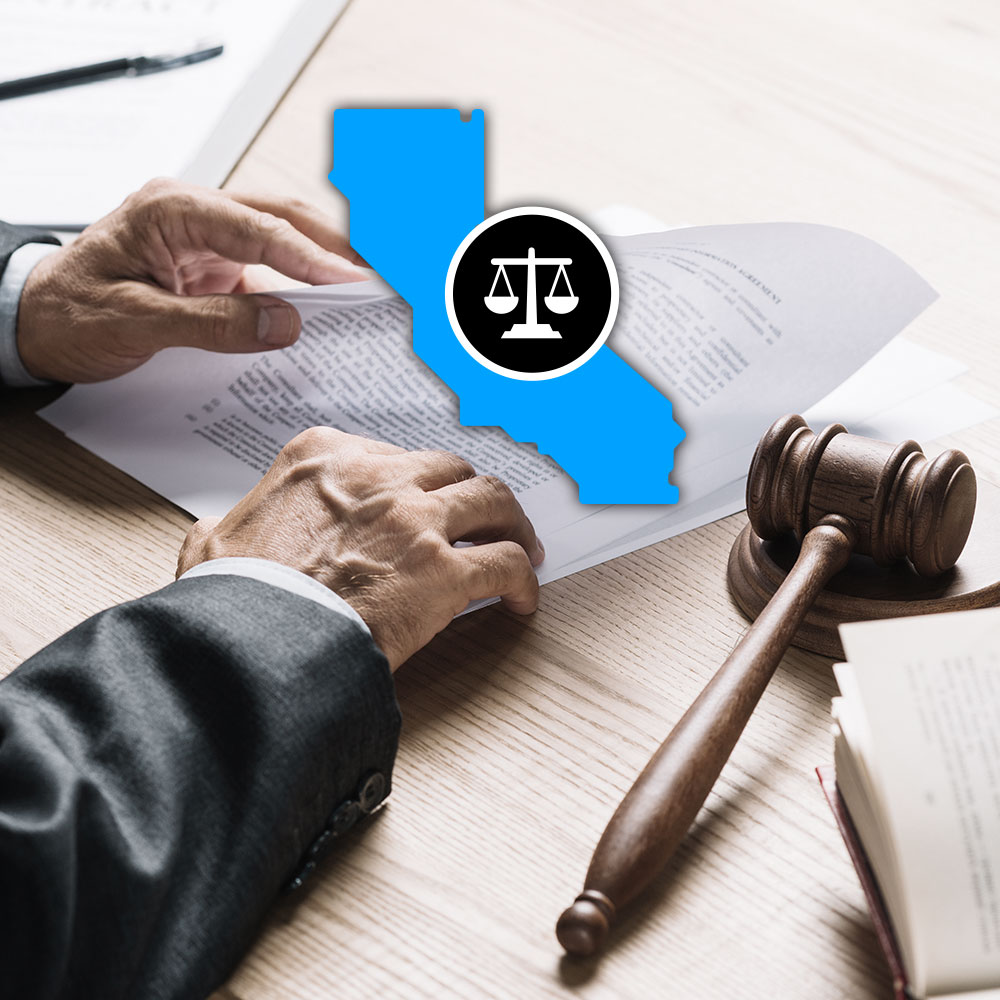GDPR cookie consent has been an important topic for businesses and marketers since the GDPR was enacted in 2018. While cookie banners are now common on websites, achieving and maintaining privacy compliance can still be challenging, especially while keeping consent rates high for marketing initiatives. Evolving legal and platform requirements often leave small business owners and marketers navigating a complex maze, sometimes without in-house legal or technical support.
Let’s break down everything you need to know about GDPR cookie consent, from designing compliant cookie banners to understanding key privacy requirements. Whether you’re a marketer or website owner, we’ll help you turn privacy compliance into an opportunity to build trust and engage your audience.
What is GDPR?
Before diving into the specifics of cookie consent, it’s important to understand the GDPR.
The General Data Protection Regulation (GDPR) is an EU law focused on safeguarding individuals’ personal data and privacy. In the US, the term “personally identifiable information” (PII) is becoming more common as privacy laws gain attention. The GDPR’s primary goal is to protect this type of sensitive information and give individuals greater control over how companies collect and use their personal data.
In recent years, the tech industry has faced growing scrutiny as people become increasingly aware of how much personal information they share with companies — sometimes unknowingly. This shift highlights the importance of handling data responsibly, as consumers are now questioning how their personal information is being collected, used, and shared and insisting on more benefit from doing so.
Companies now face the challenge of complying with data privacy laws while still personalizing and targeting their audiences effectively. For marketers, this means adopting privacy-led strategies that build trust and respect user consent. Understanding how data protection regulations like the GDPR shape the use of cookies is the first step toward creating marketing strategies that prioritize transparency and privacy compliance without sacrificing performance.
A notable example of personal data misuse involves TikTok, the popular social media app. Allegations have surfaced claiming that the platform has employed “dangerous malware” to bypass user privacy settings and collect extensive personal data without consent. This data reportedly includes sensitive details such as location, contacts, and even documents, with accusations suggesting it may have been sold to third parties.
Of additional concern is the large number of minors among the app’s user base, a demographic typically provided with extra protections under data privacy laws. TikTok denies these claims, but the controversy underscores the risks of unchecked data collection.
Another high profile case centers on Temu, a fast-growing e-commerce platform. In 2024, a threat actor claimed to have stolen a database containing personal information from 87 million users, including names, addresses, and phone numbers. Although Temu denied the breach, the incident highlights how vulnerabilities in data systems can jeopardize user privacy on a massive scale. Last June of 2024, another lawsuit was filed against the company for illegally accessing personal information of its users.
These examples demonstrate how companies’ handling of personal information has come under increasing scrutiny. Missteps can lead to significant backlash and erode public trust, especially when consumers discover how much of their data has been collected without explicit consent. This, in turn, can affect companies’ bottom line, with consumers, advertisers, partners, or investors disinclined to connect with those brands.
But data collection isn’t always malicious. Every time we use a loyalty card, share a meme, or type a search query, we share information. This data helps advertisers target ads, informs market research, and drives decisions in industries like insurance and e-commerce.
In theory, this kind of data use can benefit both businesses and consumers. For instance, seeing ads tailored to your interests or paying lower premiums because data analysis shows you’re low -risk for driving are clear advantages. However, the key lies in fostering transparency, gaining consent, and protecting user privacy — principles enshrined in regulations like GDPR.
GDPR cookie consent requirements
The misuse of personal data, as seen in high profile cases like TikTok and Temu, underscores the critical importance of privacy regulations like the GDPR. For businesses, privacy compliance begins with understanding the GDPR’s specific requirements for cookie consent. These rules not only help to ensure that companies handle personal data responsibly, but also empower users to make informed choices about their privacy.
The GDPR sets clear guidelines for how cookies and other tracking technologies can be used, focusing on transparency, user consent, and accountability.
Read about tracking cookies now
Core GDPR compliance requirements for businesses
If you do business in the EU and process the personal data of EU citizens, the GDPR applies to your company, even if it’s not based there. Following are the core requirements toward achieving and maintaining GDPR compliance.
1. Obtain consent before processing any data
Cookies cannot be placed on a user’s device until they have explicitly given their consent. Pre-checked boxes or implied consent (e.g., simply continuing to browse) do not meet GDPR standards. Users also need to be able to provide granular consent at a category level, e.g. yes to analytics cookies, no to marketing cookies, etc.
2. Provide clear and accessible information
Your cookie banner or policy must clearly explain:
- what cookies are being used
- why they’re being used, e.g. for analytics, advertising, or functionality
- who will have access to the data, e.g., third parties
Avoid legal jargon and make sure the information is easily understandable to all users.
3. Enable granular control
Users must be able to select which types of cookies they want to allow, e.g., essential, analytics, or marketing. Granular consent options empower users to control their data rather than having to accept or reject all cookies at once.
4. Make consent as easy to withdraw as it is to give
Users should have the ability to revoke or modify their consent at any time. Your website should include an easy to find option, such as a “Manage Cookies” button or link, to revisit their preferences.
5. Keep secure and comprehensive records of consent
The GDPR requires businesses to document and store records of user consent for auditing purposes. This includes:
- when consent was given
- how it was given
- what the user agreed to
Without this proof, you may face penalties in the event of a privacy compliance audit or complaint.
6. Regularly renew consent
Consent isn’t permanent. The GDPR suggests that businesses should periodically ask users to confirm or update their preferences, supporting continued privacy compliance. Also, different legal requirements that may be relevant have different requirements for consent renewal. For some it could be six months, for others, 12 months. Make sure to be familiar with relevant laws and policies for your business.
7. Design cookie banners to be transparent and user-friendly
Avoid using design tactics that influence users to accept cookies, such as bright “Accept All” buttons and dull or hidden “Reject” options. These kinds of deceptive practices, known as dark patterns, violates GDPR principles and are increasingly frowned upon by regulators.
Read about optimize cookie banners now
Why meeting GDPR requirements matters
Non-compliance with GDPR cookie consent rules can result in substantial fines and damage to your business’s reputation. Beyond legal risks, failing to respect users’ preferences can erode trust, something that’s critical for marketers who rely on strong customer relationships to drive engagement and conversions.
By addressing these requirements, businesses not only stay on the right side of the law but also create a foundation of transparency and trust that benefits both users and organizations over the long term.
GDPR cookie consent solution
Navigating GDPR cookie consent requirements can be challenging, especially for businesses without dedicated legal or technical teams. Balancing regulatory obligations with user experience requires effective tools and strategies to simplify the process.
A GDPR cookie consent solution can help businesses implement customizable cookie banners, offer granular consent options, and support transparency. These features not only assist in meeting GDPR requirements but also enhance user trust and engagement.
Read about GDPR email marketing now.
What does a GDPR cookie consent solution offer?
A well-designed GDPR cookie consent solution provides the following key benefits.
- Customizable cookie banners: Tailor banners to match your brand while clearly communicating how cookies are used. Include user-friendly options for accepting or rejecting cookies.
- Granular consent options: Enable users to choose the types of cookies they consent to, such as essential, analytics, or marketing cookies. Provide flexibility that meets both user expectations and regulatory requirements.
- Automated consent records: Maintain a secure and detailed log of user consents, including timestamps and preferences, to support accountability.
- Easy integration: Support compatibility with websites and apps of all sizes, making the implementation process simpler. Enable seamless management of cookies across multiple platforms.
- Global privacy compliance features: Adapt to additional regulations as relevant, such as the CCPA, if you do business across regions.
GDPR cookie consent examples
Usercentrics is trusted by businesses of all sizes, with over 2.1 million websites and apps in 195 countries using our Consent Management Platform. Designed to simplify cookie consent management and with powerful features like real-time consent tracking, intuitive dashboards, and customizable designs, businesses can confidently manage their privacy needs while optimizing user experiences. Usercentrics facilitates over 7 billion monthly consents. Our solution supports GDPR compliance while empowering businesses to build trust through transparency.
Explore standout examples of GDPR cookie consent banners powered by Usercentrics to see how we’re shaping the future of privacy management.

GDPR cookie policy
While cookie banners are the first point of interaction for users to manage their preferences, they’re only part of the GDPR compliance process. A well-crafted cookie policy is also essential, as it provides users with detailed information about how their data is being collected, used, and stored. Together, cookie banners and policies form the foundation of a transparent and user-focused approach to data privacy.
What is a cookie policy?
A cookie policy is a document that explains the specifics of cookie usage on your website. It informs users about:
- What cookies are used: clearly list the types of cookies, e.g., essential, analytics, marketing
- Why they are used: state the purpose behind each type of cookie, such as improving functionality or delivering targeted ads
- Who has access to the data: identify third parties involved in data processing
- How users can control cookie use: provide clear instructions on how users can manage or revoke their cookie preferences
Why is a cookie policy important for GDPR compliance?
The GDPR requires businesses to be transparent about their data processing activities, including cookie usage. A cookie policy plays a key role in meeting this requirement.
- Providing transparency: users gain a clear understanding of how cookies affect their data privacy
- Demonstrating accountability: a detailed cookie policy reflects your commitment to data privacy and protection
- Empowering users: users can make informed choices about their data by understanding the types of cookies in use and their purposes
Best practices for a GDPR cookie policy
To create an effective GDPR-compliant cookie policy, consider the following:
- Use plain language: avoid technical jargon and legalese to support accessibility for all users
- Make it easy to find: link your cookie policy in your cookie banner and website footer, as well as anywhere else that’s relevant
- Keep it updated: reflect changes in cookie use or regulatory updates promptly
- Include user rights: specify users’ rights under the GDPR, such as accessing or deleting their data
GDPR cookie compliance test
Compliance with GDPR cookie requirements is not a one-time task;, it’s an ongoing process that requires regular evaluation. A GDPR cookie compliance test helps businesses check that their cookie banners, policies, and consent practices are functioning as intended and align with privacy regulations. Beyond legal benefits, these tests also optimize cookie management to enhance personalization, improve targeted advertising, and boost monetization strategies.
Read about marketing data mining now
What is a GDPR cookie compliance test?
A GDPR cookie compliance test is a systematic review of your website’s cookie-related practices to identify gaps and check alignment with GDPR requirements. These tests typically evaluate the following:
- Cookie banner design: does the banner provide clear options for accepting, rejecting, or managing cookies?
- Consent granularity: can users select specific categories of cookies, e.g., functional, analytics, marketing?
- Policy accessibility: is your cookie policy easily accessible and written in clear language?
- Consent records: are user consents being logged and stored securely for auditing purposes?
- Cookie activation timing: are cookies being activated only after user consent is obtained?
How it benefits marketing and monetization
A cookie compliance test isn’t just about meeting regulatory requirements, it’s also a valuable tool for optimizing your marketing strategy:
- Enhanced personalization: by managing consent for analytics and marketing cookies, you can gather the insights needed to deliver more relevant user experiences
- Improved targeted advertising: valid consent enables you to use cookies for behavioral targeting, helping your ads reach the right audience effectively
- Increased user trust: a compliant and transparent approach to cookies reassures users, supporting to higher engagement and consent rates
- Optimized revenue streams: with a compliant foundation, businesses can maximize their ad revenue and marketing ROI without risking penalties or eroding trust
How to perform a GDPR cookie compliance test
Here are the steps to conduct an effective cookie compliance test:
- Use compliance testing tools: leverage tools to scan your website and analyze your cookie setup
- Review your cookie banner: verify it meets GDPR requirements for clarity, granularity, and accessibility
- Test consent flow: simulate user interactions to verify that cookies are only activated after consent
- Check consent logs: confirm that consent records are secure, accurate, and audit-ready
- Audit your policy: Make sure that your cookie policy is up to date and reflects your current cookie practices
How to comply with GDPR cookie consent
Complying with GDPR cookie consent involves turning principles like transparency, user control, and accountability into action. From auditing your cookies to setting up a compliant consent banner and policy, every step of your cookie management process should align with GDPR requirements.
Implementation can seem daunting, but breaking it down into manageable steps makes the process much more achievable. To support your efforts, we’ve created a practical checklist to guide you through managing cookie consent effectively.
GDPR cookie consent checklist for websites
Use this checklist to review your website’s cookie consent practices and align them with GDPR guidelines:
For additional guidance on consent management practices, download our consent management checklist for GDPR compliance. This resource provides actionable steps to help you manage your privacy framework confidently and stay aligned with GDPR standards.
Cookie consent in the EU
The GDPR sets a standard for cookie consent across all EU member states, but the enforcement and interpretation of these rules can vary depending on the specific guidelines issued by national data protection authorities. These differences can create challenges for businesses operating in multiple countries within the EU.
Variations in enforcement across the EU
France – CNIL
The French data protection authority (CNIL) has strict guidelines for cookie consent. For example, cookies cannot be placed before obtaining explicit user consent, and “reject all” buttons must be as visible as “accept all” buttons on cookie banners.
Germany – BfDI
In Germany, the Federal Commissioner for Data Protection and Freedom of Information (BfDI) emphasizes transparency and granular consent. Businesses must provide clear information about the purpose of each cookie category and ensure users can revoke consent easily.
Ireland – DPC
The Irish Data Protection Commission (DPC) is particularly focused on ensuring cookies are only activated after valid consent. Pre-checked boxes are not allowed, and businesses must offer clear opt-out options for non-essential cookies.
Spain – AEPD
Spain’s Agencia Española de Protección de Datos (AEPD) requires that cookie banners include detailed information about cookie use upfront and prohibits the use of vague language like “By continuing to browse, you accept cookies.”
What this means for businesses
For businesses operating across the EU, these differences mean that a one size fits all approach to cookie consent may not be sufficient. It’s important to:
- stay updated on the latest guidance from the data protection authorities in key markets
- adapt your cookie consent banner and policy to align with specific regional requirements
- use a flexible consent management platform (CMP) that allows for customization based on local regulations
Cookie consent in the US
Unlike the GDPR’s unified approach in the EU, the United States currently handles data privacy through a patchwork of state-level laws. This fragmented system means cookie consent requirements can vary depending on where your users are located. For businesses with an international or US-based audience, understanding consent requirements across US states is crucial to managing privacy compliance effectively.
Cookie consent requirements in the US
While most US data privacy laws don’t require explicit cookie consent under many circumstances like the GDPR does, businesses must:
- provide clear information about cookies and their purposes
- enable users to opt out of cookies related to the sale or sharing of personal data, targeted advertising, or profiling (depending on which state law)
- be transparent about third-party data sharing
What this means for businesses
For companies operating in both the EU and the US, navigating the differences in cookie consent laws can be complex. Key considerations include:
- Customizing cookie banners: tailor banners to comply with both GDPR in the EU and opt-out rights in the US
- Understanding regional laws: stay updated on the nuances of privacy laws in key states where your users reside
- Using a flexible and scalable CMP: choose a consent management platform that supports privacy compliance across multiple regions and adapts to different regulatory requirements
Managing GDPR cookie consent and adapting to global data regulations can be challenging, but it’s also an opportunity to strengthen user trust and improve transparency. From meeting requirements in the EU to addressing state-level laws in the US, taking the right steps helps your business stay aligned with current standards.
Building an effective consent management strategy helps businesses support privacy compliance while enhancing marketing efforts through better personalization and engagement. With tools like the Usercentrics’ Consent Management Platform, businesses can simplify cookie consent management and deliver a user experience built on transparency and trust.




